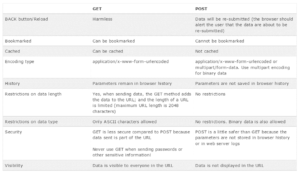What is PHP?
PHP stands for Hypertext Preprocessor.
PHP is a widely-used, open-source scripting language.
PHP scripts are executed on the server.
PHP is free to download and use.
What is a PHP File?
PHP files can contain text, HTML, JavaScript code, and PHP code
PHP code is executed on the server, and the result is returned to the browser as plain HTML
PHP files have a default file extension of “.php”
Why PHP?
PHP runs on different platforms (Windows, Linux, Unix, Mac OS X, etc.)
PHP is compatible with almost all servers used today (Apache, IIS, etc.)
PHP has support for a wide range of databases
PHP is free. Download it from the official PHP resource: www.php.net
PHP is easy to learn and runs efficiently on the server side.
Set Up PHP on Your Own PC
However, if your server does not support PHP, you must:
install a web server
install PHP
install a database, such as MySQL
The official PHP website (PHP.net) has installation instructions for
PHP: http://php.net/manual/en/install.php
Basic PHP Syntax
A PHP script can be placed anywhere in the document. A PHP script starts with <?PHP and ends with ?>:
<?php
// PHP code goes here
?>
The default file extension for PHP files is “.php”.
Comments in PHP
Example
<html>
<body>
<?php
//This is a PHP comment line
/*
This is a PHP comment block
*/
?>
</body>
</html>
PHP Variables
Variable can have short names (like x and y) or more descriptive names (age, carname, totalvolume).
Rules for PHP variables:
- A variable starts with the $ sign, followed by the name of the variable
- A variable name must begin with a letter or the
- underscore character
- A variable name can only contain alpha-numeric characters and underscores (A-z, 0-9, and _ )
- A variable name should not contain spaces
- Variable names are case sensitive ($y and $Y are two different variables)
Creating (Declaring) PHP Variables
PHP has no command for declaring a variable.
A variable is created the moment you first assign a value to it:
$txt="Hello world!";
$x=5;
After the execution of the statements above, the variable txt will hold the value Hello world! and the variable x will hold the value 5.
Note: When you assign a text value to a variable, put quotes around the value.
PHP is a Loosely Typed Language
In the example above, notice that we did not have to tell PHP which data type the variable is.
PHP automatically converts the variable to the correct data type, depending on its value.
In a strongly typed programming language, we will have to declare (define) the type and name of the variable before using it.
PHP Variable Scopes
The scope of a variable is the part of the script where the variable can be referenced/used.
PHP has four different variable scopes:
- local
- global
- static
- parameter
Local Scope
A variable declared within a PHP function is local and can only be accessed within that function:
Example
<?php
$x=5; // global scope
function myTest()
{
echo $x; // local scope
}
myTest();
?>Global Scope
A variable that is defined outside of any function, has a global scope.
Global variables can be accessed from any part of the script, EXCEPT within a function.
To access a global variable from within a function, use the global keyword:
Example
<?php
$x=5; // global scope
$y=10; // global scope
function myTest()
{
global $x,$y;
$y=$x+$y;
}
myTest();
echo $y; // outputs 15
?>
Static Scope
When a function is completed, all of its variables are normally deleted. However, sometimes you want a local variable to not be deleted.
To do this, use the static keyword when you first declare the variable:
Example
<?php
function myTest()
{
static $x=0; echo $x;
$x++;
}
myTest();
myTest();
myTest();
?>
OUTPUT ?
Parameter Scope
A parameter is a local variable whose value is passed to the function by the calling code.
Parameters are declared in a parameter list as part of the function declaration:
Example :
<?php
function myTest($x)
{
echo $x;
}
myTest(5);
?>
PHP echo and print Statements
In PHP there are two basic ways to get the output: echo and print.
There are some differences between echo and print:
echo – can output one or more strings
print – can only output one string, and returns always 1
Tip: echo is marginally faster compared to print as echo does not return any value.
<?php
echo "<h2>PHP is fun!</h2>";
echo "Hello world!<br>";
echo "This", " string", " was", " made", " with multiple parameters.";
?>
PHP Arrays
An array stores multiple values in one single variable:
Example
<?php
$cars = array("Volvo","BMW","Toyota");
echo "I like " . $cars[0] . ", " . $cars[1] . " and " .
$cars[2] . ".";
?>
Create an Array in PHP
In PHP, the array() function is used to create an array:
Example :
$cars = array("Volvo","BMW","Toyota");
In PHP, there are three types of arrays:
- Indexed arrays – Arrays with a numeric index
- Associative arrays – Arrays with named keys
- Multidimensional arrays – Arrays containing one or more arrays
PHP Indexed Array
There are two ways to create indexed arrays:
The index can be assigned automatically (index always starts at 0):
$cars=array("Volvo","BMW","Toyota");OR
The index can be assigned manually:
$cars[0]="Volvo";
$cars[1]="BMW";
$cars[2]="Toyota";PHP Associative Arrays
Associative arrays are arrays that use named keys that you assign to them.
There are two ways to create an associative array:
$age=array("Peter"=>"35","Ben"=>"37","Joe"=>"43 ");OR
$age['Peter']="35";
$age['Ben']="37";
$age['Joe']="43";Example
<?php
$age=array("Peter"=>"35","Ben"=>"37","Joe"=>"43"); <br /><br />echo "Peter is " . $age['Peter'] . " years old.";
?>// Output : Peter is 35 years old
PHP Multidimensional Arrays
An array can also contain another array as a value, which in turn can hold other arrays as well. In such a way we can create two- or three-dimensional arrays:
Example
<?php
// A two-dimensional array:
$cars = array (
array("Volvo",100,96),
array("BMW",60,59),
array("Toyota",110,100)
);<br /><br />print_r($cars);
?>Output:
Array ( [0] => Array ( [0] => Volvo [1] => 100 [2] => 96 ) [1] => Array ( [0] => BMW [1] => 60 [2] => 59 ) [2] => Array ( [0] => Toyota [1] => 110 [2] => 100 ) )
The foreach Loop
The foreach loop works only on arrays and is used to loop through each key/value pair in an array.
foreach ($array as $value) {
code to be executed;
}For every loop iteration, the value of the current array element is assigned to
$value (and the array pointer is moved by
one) – so on the next loop iteration, you’ll be looking at the next array value.
Example:
<?php
$x=array("one","two","three"); <br /><br />foreach ($x as $value)
{
echo $value . "<br>";
}
?>In PHP we have the following conditional statements:
If
If…else
If…elseif…else
switchPHP – The if Statement
Syntax
if (condition) {
code to be executed if condition is true;
}Example
$t = date("H");
if ($t < "20") {
echo "Have a good day!";
}
?>PHP – The if…else Statement
Syntax
if (condition) {
code to be executed if condition is true;
} else {
code to be executed if condition is false;
}<?php
$t = date("H");
if ($t < "20") {
echo "Have a good day!";
} else {
echo "Have a good night!";
}
?>PHP – The if…elseif…else Statement
Syntax
if (condition) {
code to be executed if this condition is true;
} elseif (condition) {
code to be executed if first condition is false and this condition is true;
} else {
code to be executed if all conditions are false;
}<?php
$a = 10;
$b = 12;
if($a > $b):
echo $a." is bigger than ".$b;
elseif($a == $b):
echo $a." is equal to ".$b;
else:
echo $a." is neither greater nor equal to ".$b;
endif;
?>Output: 10 is neither greater nor equal to 12.
PHP Functions
PHP User Defined Functions
Besides the built-in PHP functions, we can create our own functions.
A function is a block of statements that can be used repeatedly in a program.
A function will not execute immediately when a page loads.
A function will be executed by a call to the function.
Create a User-Defined Function in PHP
A user-defined function declaration starts with the word “function”:
Syntax
function functionName(arg1, arg2…) {
code to be executed;
}Note: A function name can start with a letter or underscore (not a number).
GET Vs POST

PHP $_GET Variable
The predefined $_GET variable is used to collect values in a form with method=”get”
Information sent from a form with the GET method is visible to everyone (it will be displayed in the browser’s address bar) and has limits on the amount of information to send.
Example
<form action="welcome.php" method="get">
Name: <input type="text" name="fname">
Age: <input type="text" name="age">
<input type="submit">
</form> When the user clicks the “Submit” button, the URL sent to the server could look something like this:
http://www.w3schools.com/welcome.php?fname=Peter&age=37
The “welcome.php” file can now use the $_GET variable to collect form data as follow:
Welcome <?php echo $_GET["fname"]; ?>.<br>
You are <?php echo $_GET["age"]; ?> years old!The $_POST Variable
The predefined $_POST variable is used to collect values from a form sent with method=”post”.
Information sent from a form with the POST method is invisible to others and has no limits on the amount of information to send.
Note: However, there is an 8 MB max size for the POST method, by default (which can be changed by setting the post_max_size in the php.ini file).
Exercise!
- Write a program called CheckPassFail which prints “PASS” if the variable “mark” is more than or equal to 50; or prints “FAIL” otherwise
- Write a program called CheckOddEven which prints “Odd Number” if the int variable “number” is odd, or “Even Number” otherwise
- Write a program which adds, subtract, divide and multiply two number and show the result on the screen.
Post your answers in the comment section below… (:
